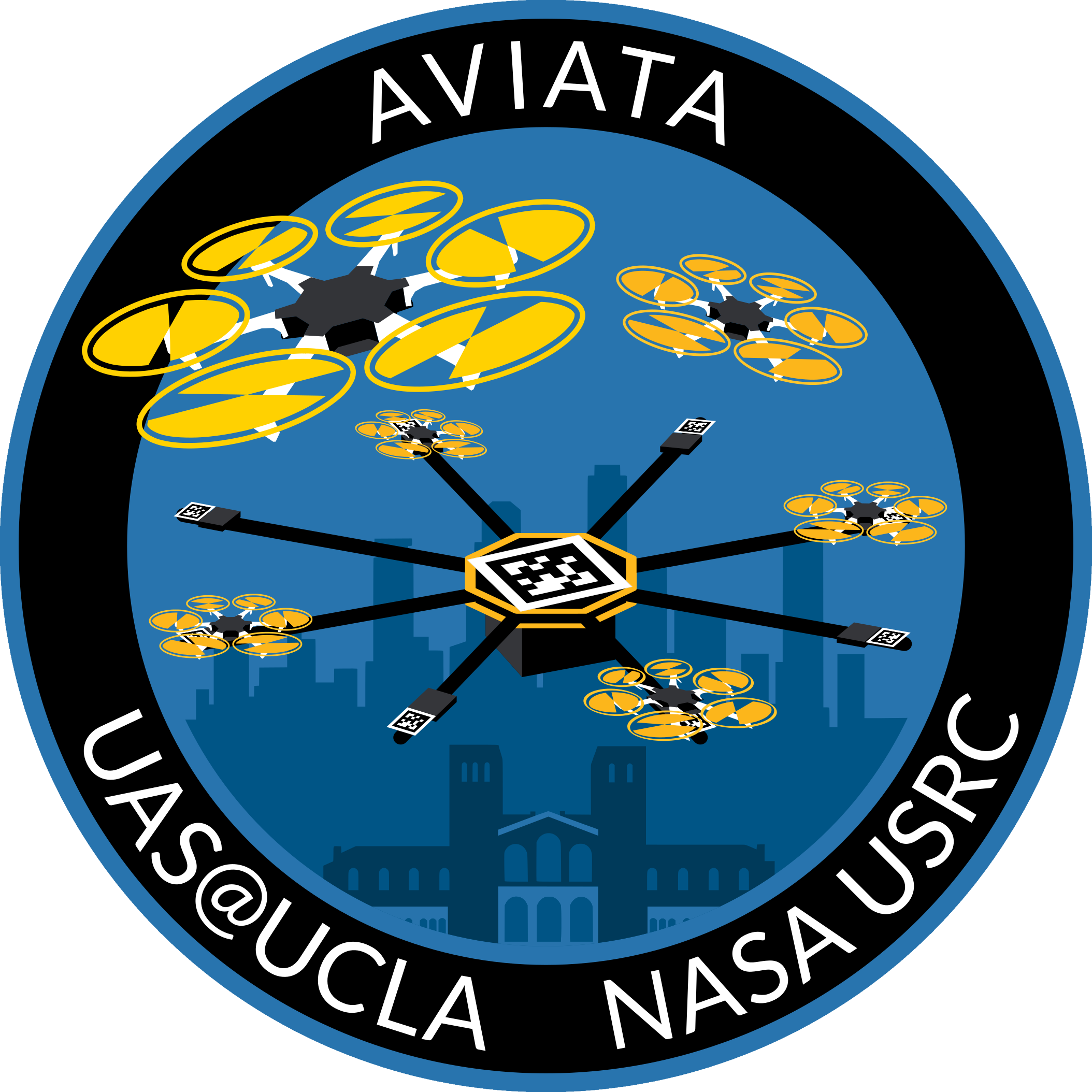
Update #2: October 2, 2021
Software Updates
Author: David Thorne
AVIATA Software has begun progressing from theory into design. Most of our previous work
included research and theory crafting possible solutions to problems, but in the past weeks, we've begun
designing those solutions. Some large challenges the team needs to solve include navigating to the apparatus
while in flight and coordinating a physically connected and variable drone swarm.
To approach the apparatus
before the drone docks, it will first follow GPS waypoints until using vision recognition for the final
approach. We plan on using AprilTag (https://april.eecs.umich.edu/software/apriltag) markers to aid in visual
recognition of the system and position tracking. The airframe team brought up the possible obstruction of drone
downwash using a large April tag, so the current solution is to use one large tag in the center of the apparatus
with smaller tags closer to individual docks.
Another branch of the team has begun designing a physical
simulator which models the entire system as one drone with unique control solutions based on the docked drones.
This simulator can be further improved using more advanced graphical outputs, and implementation of real time
docking and undocking simulation.
Hardware Updates
Author: Willy Teav
Over the past three weeks, three of our hardware team members had drone kits shipped to
their homes and are working on assembling them. The drone that we chose for this current stage is the Hobbypower
HF-F550 Hexacopter. The reason why we chose this particular vehicle was because the kit provided the most bang
for our buck. For a price point just south of $200, each kit contained a frame, fasteners, motors, speed
controllers, propellers, a GPS module, a power module, and a Pixhawk flight controller. This is everything that
is needed to fly except for a battery and a receiver/transmitter combo.
The kit's completeness and low price
made it a good choice for our team, especially when looking at the bigger picture. At this phase of the project,
our goal is to create a proof of concept for our proposal. Even though we have received many generous donations
(shout out to all of our donors), we have to keep in mind that whichever model we choose, its unit cost will be
multiplied by the number of drones we end up purchasing.
However, there are still some drawbacks to cutting
costs. Recently, a member of the team discovered that their kit came with a defective motor. We also noticed
several minor manufacturing defects and that there were no instructional manuals included or available
online.
The HF-F550 Hexacopter is a clone of DJI's Flame Wheel F550 Hexacopter. The frame consists of two
plates, six arms, and some landing gear. The bottom plate is essentially a giant PCB with solder pads for the
ESCs and the battery. The top plate has slots to accommodate for mounting the Pixhawk. One thoughtful feature
was coloring a pair of arms and propellers different so that the front of the drone can be identified. There are
also two sets of brushless motors included, their difference is the direction in which their propeller cone/nut
tightens; this makes sure that the propeller doesn't loosen itself during flight.
Apart from starting to work
with assembling the drones, the hardware team is still busy preparing to prototype our mounting mechanism and
for a beam-bending test. We were also in the midst of discussing how to proceed with integrating a visual target
onto the frame. However, the biggest news is that our academic school year has just begun, and with that comes a
fresh crop of new members eager to hop on. On behalf of the entire team, we are looking forward to working with
all of our new members, to what this year will bring, and how this project will continue to evolve.
Acknowledgment
These results are based upon work supported by the NASA Aeronautics Research Mission
Directorate under award number 80NSSC20K1452. This material is based upon a proposal tentatively selected by
NASA for a grant award of $10,811, subject to successful crowdfunding. Any opinions, findings, and conclusions
or recommendations expressed in this material are those of the authors and do not necessarily reflect the views
of NASA.
 Join
Calendar
Officers
Gallery
Tools
Join
Calendar
Officers
Gallery
Tools
